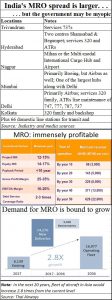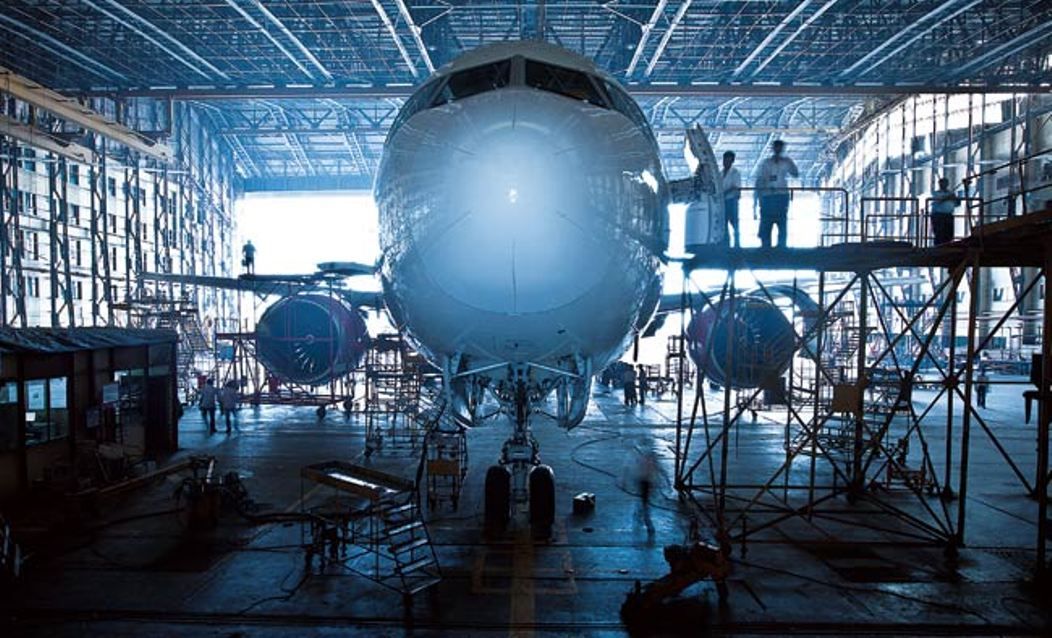http://www.freepressjournal.in/analysis/is-india-emerging-as-aircraft-repair-hub-r-n-bhaskar/1255629
Will the govt allow India’s AIESL to emerge as Asia’s aircraft repair hub?
— By | Apr 12, 2018
Last month, the government announced that it had appointed the consultancy firm EY as the transaction advisor for Air India’s strategic sale (http://www.civilaviation.gov.in/sites/default/files/PRELIMINARY%20INFORMATION%20MEMORANDUM.pdf). The  aviation minister said that Air India would be offered to potential buyers as four different entities –
aviation minister said that Air India would be offered to potential buyers as four different entities –
- Air India, and its low-cost arm Air India Express and subsidiary AI-SATS,
- Regional airline Alliance Air,
- Air India Air Transport Services Ltd (AIATSL) and
- Air India Engineering Services Ltd (AIESL) which would be sold separately.
What the minister did not tell was that of all the entities, AIESL has the potential of becoming the most profitable business in terms of rates of return on capital employed. This is because AIESL is engaged in providing MRO or maintenance, repair and overhaul of aircraft services (http://aiesl.airindia.in/aboutus.aspx).
But in order to become a extremely competitive global player, AIESL will require funds of around $250 million. Moreover, with the markets themselves expanding (see chart), this is the best of times when AISEL could actually blossom.
However, the profitability of the MRO business depends on huge investments as well. In addition to money, the success of the MRO business itself depends on three factors – quality, turnaround time, and commercials.
As may be expected, the basic pre-requisite for this business is quality. The MRO operator has not only to identify the problem, but after fixing it has to certify that the aircraft is fit to fly. That right to certify airworthiness is possible only when the MRO operator has the requisite licences. These come from the original equipment manufacturers or OEMs – mostly Boeing and Airbus for the aircraft; but also includes other OEMs. For instance, the right to certify aircraft engines usually comes from Rolls Royce, Pratt & Whitney or General Electric which account for most of the engines that aircraft use. Then there are makers of hydraulic equipment that planes use, the landing gear is one major bit. In fact, each aircraft type can have several thousand pieces of components – the engine alone accounts for around 4,000. Each of these components requires designs, manuals, testing bays, and the right to certify that the component works well. Each of these has its own set of licences and qualifying conditions.
These licences, designs, software cost money. And the money required for getting all the required licences can be quite large – around US$300-$400 million. This excludes the hangar space, equipment, and access rights to the airport itself.
India’s largest MRO – AIESL – already has much of what is required. Thanks to the government’s insistence – since it has been a large purchaser of aircraft – that it should have the right to repair, maintain and overhaul its own aircraft, the OEMs have given the government the right to do all this and certify the airworthiness of the aircraft or its parts. But this permission exists for the planes India owns, not for doing third party MRO work. AISEL has, through sheer persuasion and negotiation, managed to get the OEMs to allow it to be an MRO for Jet Airways’ aircraft as well. Negotiations are underway with Indigo.
But there is a problem here. All aircraft owned by India can be certified by the DGCA (Director General of Civil Aviation), which is backed by the licences India has procured from the OEMs. But when the aircraft is leased, DGCA certification won’t do. These planes have to be certified by an MRO accredited with the Federal Aviation Authority (FAA) of the US, or by the EASA (European Aviation Safety Agency). That means acquiring fresh licences and training. That means putting up more money.
The other problem is setting up inventories. With thousands of components for each type of aircraft, any MRO which wants to be a global player must be able to cater to at least 50% of the normal requirements of an aircraft.AIESL is believed to be capable of meeting only 25% of the business requirements as of now. That means putting up money for the components, the test bays, the software and the licences. Informed sources say that AIESL will require around $250 million to upgrade itself as a world class MRO.
If AISEL does not put up the money, two possible scenarios could play out. It is possible that GMR and Airworks, both Indian entities, may step in. Both have been eyeing the MRO business and have started nibbling away at the edges. The more worrisome possibility is that business could go either to the middle east MROs or to Thailand which is eyeing this business quite seriously and has plans to invest over US$400 million within the next two years (http://www.asiaconverge.com/2018/04/will-thailand-mro-trounce-india-plans/). Then there is Singapore, but which may find expansion difficult because it may not have the additional land and air capacity required.
Thus AISEL enjoys a tremendous advantage. It has reach — it covers the whole of India It has excellent trained manpower. It is raring to take up additional responsibility, and is extremely competitive when it comes to costs. But it needs to upgrade itself and that will cost money.
Will the government allow it to do that before the disinvestment process begins? That is the big question everyone has been asking.





































COMMENTS